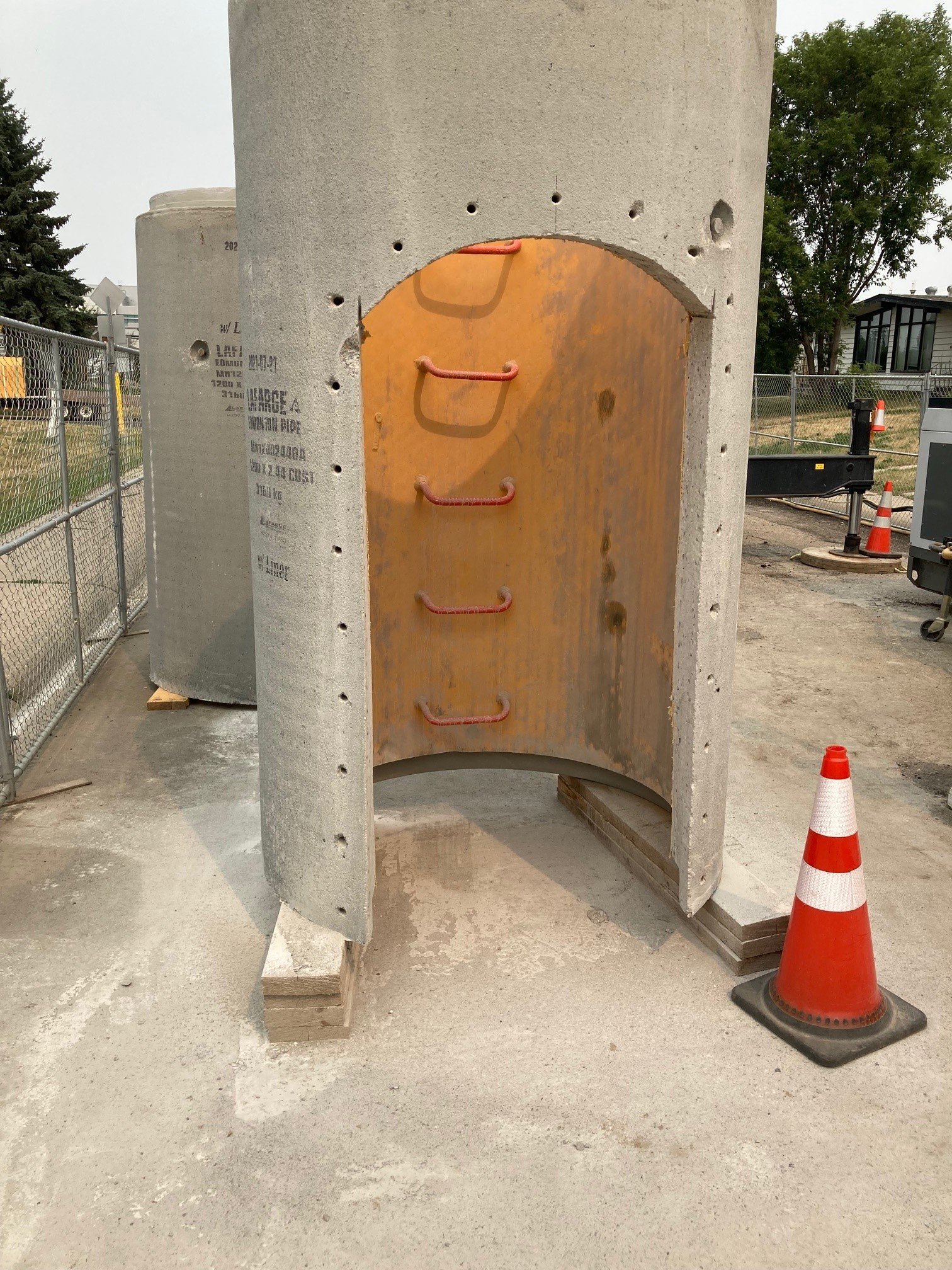Epoxy Coatings vs. CPL for Concrete Protection
When it comes to protecting concrete structures from damage, deterioration, and environmental factors, two prevalent solutions are often considered: epoxy coatings and Concrete Protective Liners (CPL). Both options offer unique advantages and serve as effective barriers against various destructive forces, yet they differ significantly in their application, durability, cost, and overall performance.
What are Epoxy Coatings?
Epoxy coatings are a type of coating consisting of an epoxide resin, polyamine hardener, and other additives. When mixed, the resin and hardener undergo a chemical reaction, creating a strong, rigid plastic material that bonds to many surfaces, including concrete - if there is proper surface preparation.
Some of the common epoxy coatings seen in the wastewater industry include, but are not limited to:
Neopoxy, Sikaflex 1A, Raven, Epoxytec.
Advantages of Epoxy Coatings:
Chemical Resistance: Epoxy provides resistance to acids, alkalis, solvents, and other chemicals, making it ideal for industrial environments.
Seamless Surface: The application of epoxy creates a smooth, continuous surface that is easy to clean and maintain.
Limitations of Epoxy Coatings:
Preparation and Application: Proper surface preparation is crucial; any mistakes can lead to poor adhesion and coating failure/delamination. This includes using “green”/fresh concrete. There are many examples of epoxy delaminating from concrete, especially in underground applications. This places the entire system at risk, if the epoxy completely falls off the structure and blocks flow in the system.
Temperature and Humidity Sensitivity: Epoxy application requires specific environmental conditions; otherwise, it may not set correctly.
Consistency: Handy application of epoxy can be very difficult to apply uniformly to meet manufacturers specifications.
Cost: Epoxy, when it is applied as per manufacturer specification, is expensive. There is a significant material cost differential when comparing epoxy to HDPE concrete protective liner. Unfortunately, using less epoxy than manufacturers’ specifications is known to happen due to the high cost of the material. A visual inspection is not adequate to determine whether enough epoxy was used in an application. Reducing material quantity can artificially make epoxy look more cost-effective than it is.
Wear and Tear: While durable, epoxy can wear down over time, especially in high-traffic areas, requiring reapplication.
What is Concrete Protective Liner (CPL)?
Concrete Protective Liner, commonly referred to as CPL, is a geomembrane or plastic sheeting used to line the interior of concrete structures. Typically made from HDPE, CPL is designed to protect concrete from mechanical damage, chemical corrosion, and water infiltration. It is commonly used in wastewater, landfills, and chemical containment areas.
Advantages of CPL:
Longevity: CPL offers extended durability and can last for decades with minimal maintenance. Engineered Containment is focused on protocols that push a 100-year design service life!
Chemical and Biological Resistance: It is highly resistant to a wide range of chemicals and is impervious to microbial-induced corrosion. Alternate materials to HDPE are available depending on the specific containment needs. This includes polypropylene (PP), which works better than HDPE in higher-temperature applications.
Versatility: CPL can be applied to new constructions and existing structures, conforming to various shapes and sizes. It is used in both precast and cast-in-place applications. It can be used in either dry-cast or wet-cast concrete manufacturing.
Limitations of CPL:
Installation: Requires specialized equipment and skilled technicians for proper installation. Technicians must be properly certified and adhere to strict QA/QC protocols.
Repair and Maintenance: While durable, damages to the liner can compromise the protective barrier and require professional repairs. Regular inspection is encouraged, as small damages can be easily repaired before major problems occur. The recommended inspection window for combined systems is 3-5 years and 5-7 years for sanitary systems.
Epoxy Coatings vs. CPL: The Key Differences
The choice between epoxy coatings and CPL should be based on several factors, including specific environmental conditions, expected wear and tear, chemical exposure, and budget constraints. Here are the key differences to consider:
Durability and Longevity: CPL offers superior longevity compared to epoxy, especially in harsh chemical environments.
Application and Maintenance: Epoxy requires more frequent maintenance and reapplication. However, epoxy can be easier to install in smaller or less complex projects.
Cost: Epoxy coatings might have a higher material cost (when installed as per manufacturer specification). Both the initial and the long-term investment in CPL are more cost-effective due to its durability and lower maintenance requirements.
Protection Level: While both provide protection, the choice between them might depend on the level of chemical, mechanical, and biological protection required.
Both epoxy coatings and Concrete Protective Liners offer solutions for protecting concrete structures from various forms of damage. The decision between the two should be based on a thorough analysis of the project requirements, environmental conditions, and budgetary considerations. Understanding the unique attributes and limitations of each method can lead to a more informed, effective, and durable concrete protection strategy.



